Air source heat pumps were designed with the modern house taken into consideration. Due to the design differences between modern and old houses, it would be of good practice to know if air source heat pumps would work in old houses as well.
Air source heat pumps would work in old houses if certain conditions are met, including the presence of quality or upgraded insulation, ample space for fitting the air source heat pump outside, and upgrades of existing pipework and heat emitters (radiators and underfloor heating for example).
The main questions to consider when installing an air source heat pump in an old house are how will the heat be emitted (are your radiators, underfloor heating, or other heat emitters suitable) and can the house hold on to the heat that is generated (is the insulation suitable).
Due to the technological differences in the structural design of modern and old houses, old houses would have to be renovated to fully harness the capabilities of these heat pumps effectively. The rest of this article will shed more light on this subject.
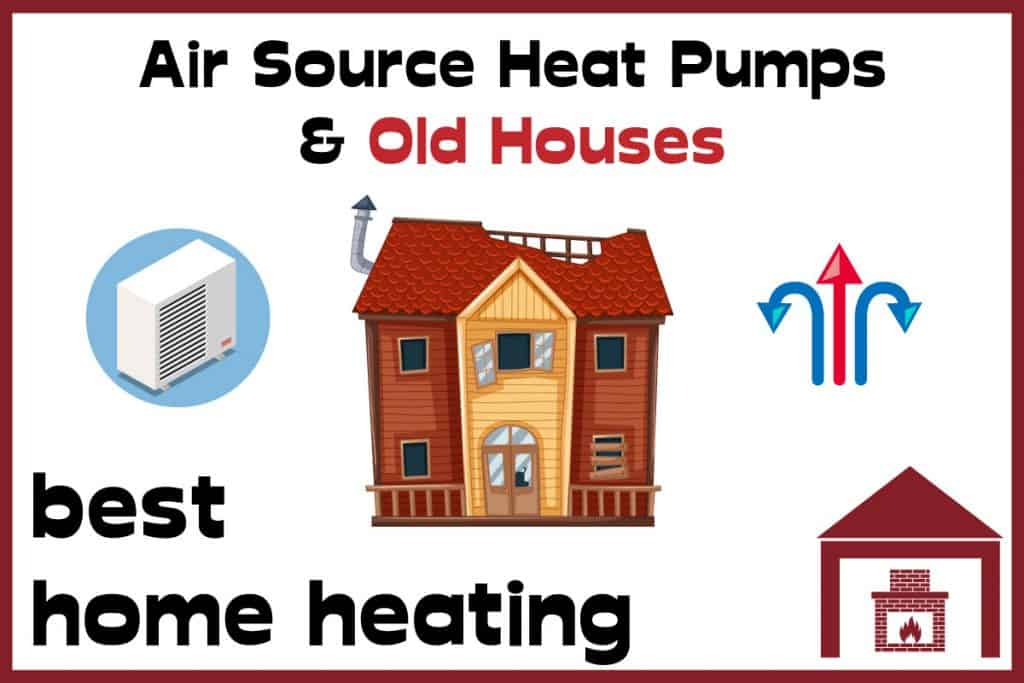
How do Air Source Heat Pumps work?
Typically, an air source heat pump has an outdoor unit and an indoor air-handling unit. The outside unit has tubes filled with liquid refrigerant. As outside air is blown over the tubes, the refrigerant warms up and turns into gas.
The gas then travels via a compressor, which further raises its temperature. A heat exchanger passes the heat to heat emitters, such as radiators or an underfloor heating system. Meanwhile, the refrigerant turns liquid again, and the process continues.
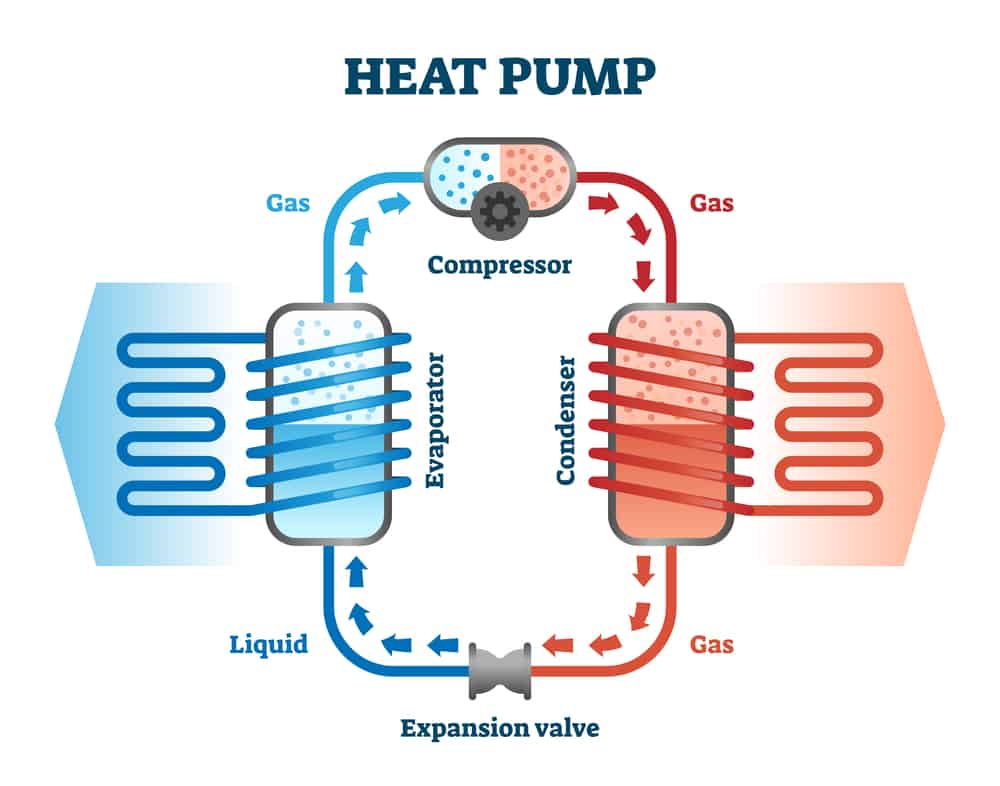
While a boiler operates at around 70°C, an air source heat pump works at a significantly lower temperature: around 35°C to 45°C. If you are replacing a boiler with a heat pump, your existing radiators may not be compatible with it.
Because ASHPs operate at lower temperatures, they require heat emitters with large surface areas. Underfloor heating systems meet this purpose very well. That’s why these heat pumps are almost exclusively used with underfloor heating systems. Radiators with large surface areas also work pretty well.
Are Air Source Heat Pumps Suitable for Old Houses?
Air source heat pumps are acceptable for most houses. However, for older houses, additional work such as improving insulation, pipes and/or ductwork, and other interior heating gear may be necessary to get the most out of a heat pump.
Installing an air source heat pump in an older house that lacks the necessary current heating setup might be more challenging and costly, but it is still doable and appropriate.
Can Air Source Heat Pumps be Installed on an Old Property?
While the great majority of homes, both old and new, can be converted to function with Air source heat pumps. When installing in an older home, more attention may need to be placed on the following:
Levels of insulation
Increased insulation in a home can assist to keep heat in for longer periods and lower energy bills. The heat produced and emitted through an air source heat pump system is of a lower temperature but present for a longer period of time than you would expect from a conventional boiler.
This means that if you have an easy exit for the heat produced through poor insulation and holes in the walls and roof, then the heat will never be able to accumulate and build in the home.
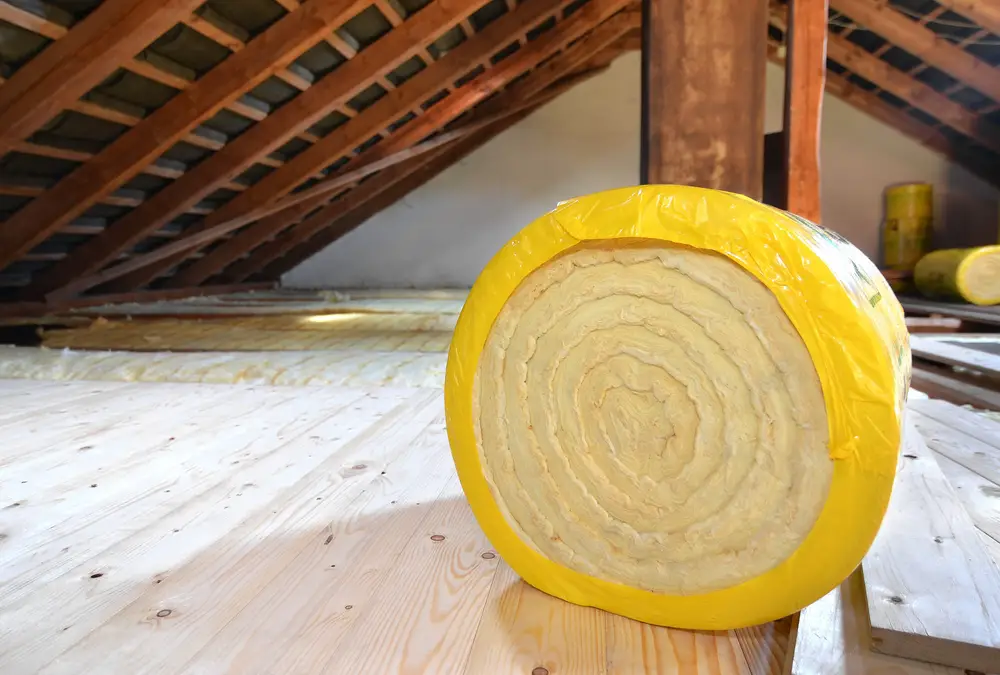
Ducts and pipes
Internal heating system pipes and/or ducts may need to be updated for usage with an air source heat pump. Air ducts facilitate air movement from your interior unit (also known as an air handler) to your entire home. Duct installation is crucial for effective air circulation throughout your house and for providing you with maximum comfort. The ductwork that is properly sized and installed extends the life of the equipment.
Radiators
Larger radiators and a greater number of radiators may be necessary to guarantee that the lower temperature heat is adequately expelled.
A relatively low flow and low-temperature system is required, meaning you need an increased surface area for heat emission. This is why heat pumps work so well with underfloor heating systems.
Check out our dedicated article all about air source heat pumps and radiators here, you may need to change or upgrade your radiators to accommodate an air source heat pump in an older house.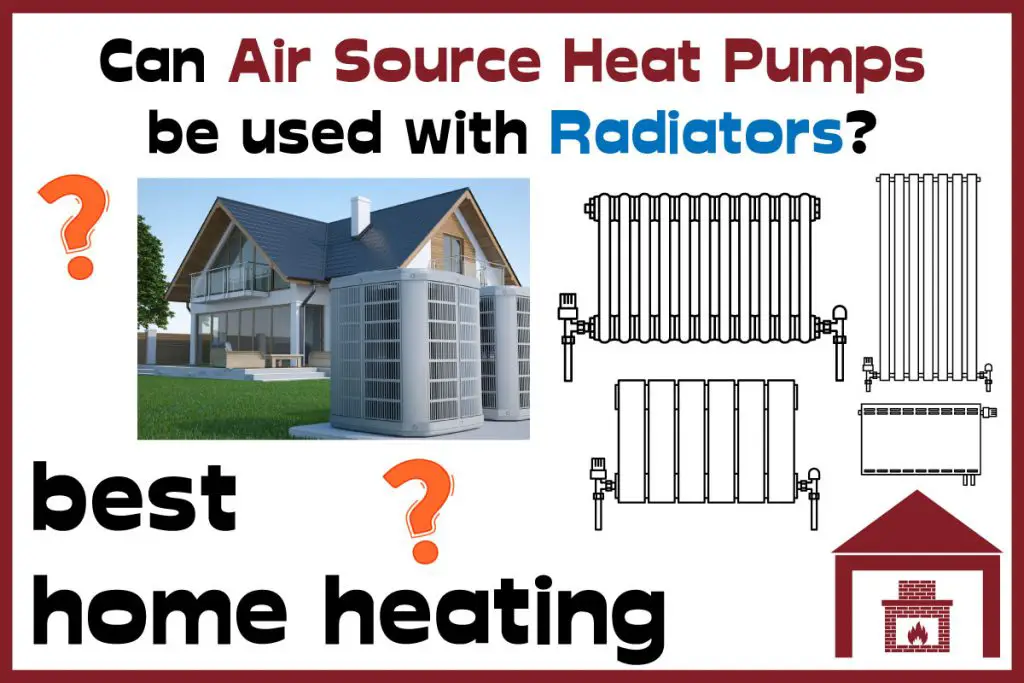
Underfloor heating
Because of their enormous surface area, air-source heat pumps work well with underfloor heating. Air source heat pumps are typically used in conjunction with water underfloor heating. Generally, when these systems are installed, the most frequent method of transmitting heat into the building is either by water underfloor heating or immediately pumping warm air into the home’s environment
When employing a heat pump for underfloor heating, the underfloor heating pipe should typically be spaced at 100mm intervals throughout the property. Installing the pipes at 100mm intervals enhances a heat pump’s efficiency. The Air source heat pump may not supply adequate warmth in homes with 200mm spacing installed pipes.
Check out our dedicated article all about air source heat pumps and underfloor heating here.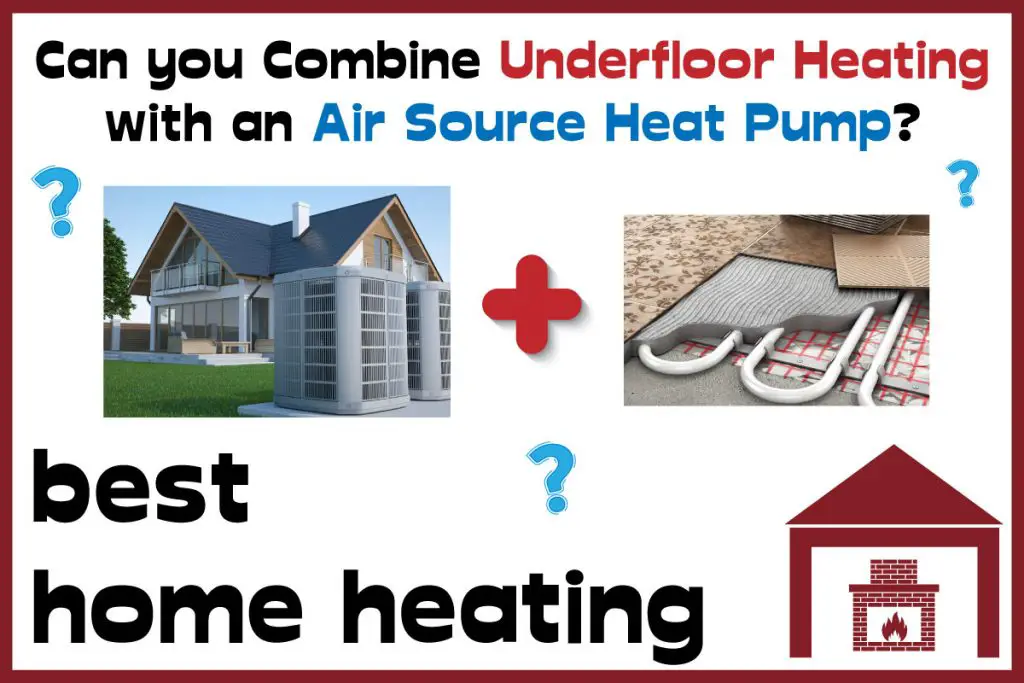
Enough room for an outside unit to be installed.
For air source heat pumps, an external unit including the critical fan component is required. This component sucks in air, which is then transformed into heat and fed into your house. However, there are several types of air-source heat pumps, and some come in a single huge unit (monobloc pumps), while others come in two sections, an outside and an inside unit (split pumps).
With certain split pumps, you have more leeway in locating the fan unit away from the property. The most important thing to remember about an air source heat pump is that the outside unit will take up space on the outside of your home.
Ample space/some spare rooms
Most heat pumps have an indoor unit as well as an outdoor fan, which is usually controlled by the indoor unit. It may be necessary for you to install a hot water storage tank as well. This is necessary if you want your heat pump to heat your hot running water as well as your heating. Therefore, you’ll need an indoor space for both the tank and control unit.
There is a possibility that you can simply replace your boiler and hot water tank if you already have them. However, you will need to make sure the hot water tank you choose is compatible with your heat pump – as it is unlikely you will be able to keep the current one.
In smaller homes, or those without a storage tank – you will need to make sure you have the space for the tank, otherwise, you will have to find another method of heating your water.
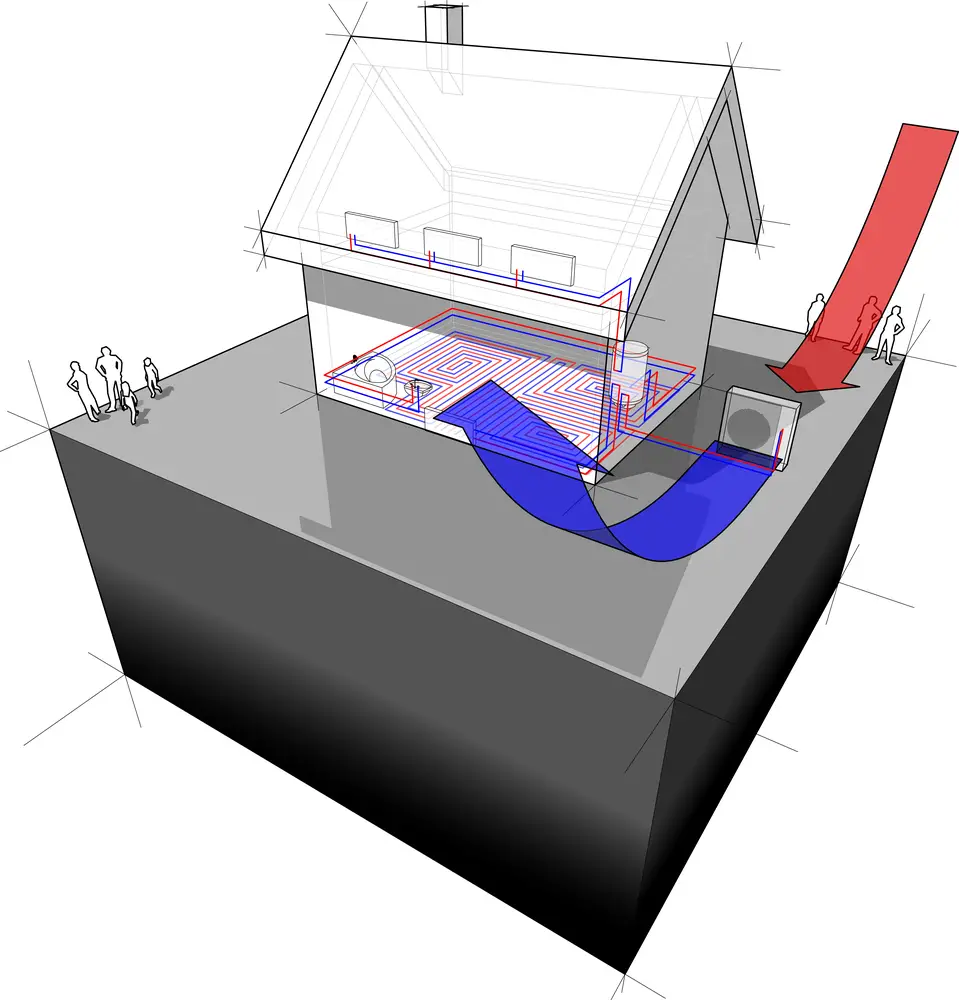
Why are Air Source Heat Pumps less suitable for Old Houses?
Poor insulation and lack of infrastructure are something that makes them unsuitable for old homes. Usually, old Victorian-style homes are made with stone or brick masonry, which does not provide very good insulation properties. Since, Air source heat pumps can only produce a moderate amount of heat efficiently, keeping up that heat in a less insulated environment would be a challenge.
Old houses with infrastructure like old duct paper and iron radiators are not usually compatible with air source heat pumps. This is because these mediums require a high-temperature heating system that would overshadow the heat losses when transmitting heat.
Air Source Heat Pumps, Old Houses, and Insulation
The most common issue with old houses is insulation. It’s typically outdated or of poor quality in older homes, and in certain circumstances, it’s non-existent. If you’re unsure about your insulation condition, you may hire an expert to inspect it. (Don’t forget to check your attic insulation as well—critical.) Cold air can enter the house through the attic, gaps in the walls, outside walls, and windows.
If you have an untreated fireplace with a chimney, don’t be shocked if you get cold sitting next to it—it’s a cold air magnet. If your windows are a major source of the problem, you don’t have to replace them. You probably shouldn’t! In many circumstances, air sealing your windows with a method known as weather stripping is a preferable alternative.
Old houses have a lot of cracks, gaps, and fissures where cold air may get in. These aren’t obvious gaps, but they exist—and they may make your house feel utterly frigid on the inside.
The walls of old houses are usually made with masonry in contrast with modern constructions with walls made with wood or steel framing, that offer better insulation properties. This is mainly due to their ability to infill high-performance insulating materials like Rockwool.
Wall insulation capabilities are usually measured in thermal rating “R”. Ordinary masonry walls have an R-value around 2 while modern steel frame walls with Rockwool insulation could have an R-value around 4. The higher the R-value, the more the insulating capability of the material.
Will Air Source Heat Pumps work with existing radiators?
Air source heat pumps can utilize existing radiators, although they may not be very efficient. An existing radiator may need to be replaced with a bigger one that matches the flow temperature of the heat pump. If the building is well-insulated, air source heat pumps function more efficiently with existing radiators.
Additionally, it also depends on the type of radiators. Some work well with air source heat pumps, while others do not. Usually, aluminum radiators work great with air source heat pumps due to their great conductivity. On the other hand, steel panel radiators might not be the best fit for air source heat pumps.
The best alternative to radiators is underfloor heating, which has a large surface area. Although it requires a few hours or even more is needed for an underfloor heating system to reach its optimum temperature.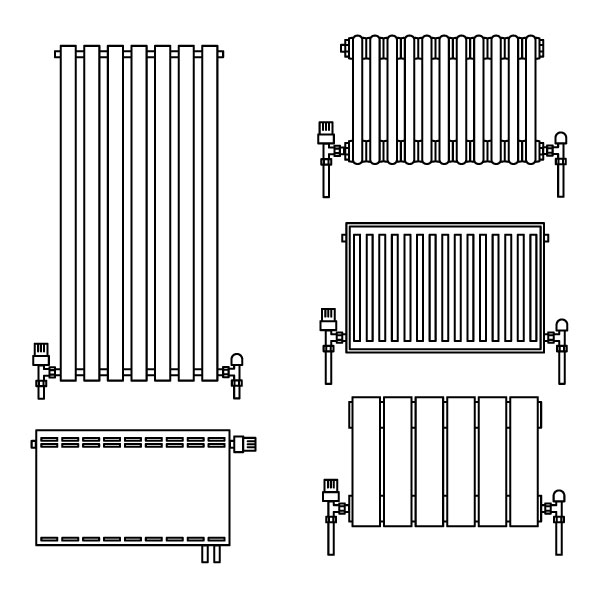
Conclusion – Old Houses and Air Source Heat Pumps
Air source heat pumps are suitable for most homes. However, to get the most out of a heat pump, extra work such as increasing insulation, pipes and/or ductwork, and other interior heating equipment may be required in older homes.
Insulation is the most prevalent problem in ancient houses. In older homes, it’s usually obsolete or of low quality, and in other cases, it’s non-existent.
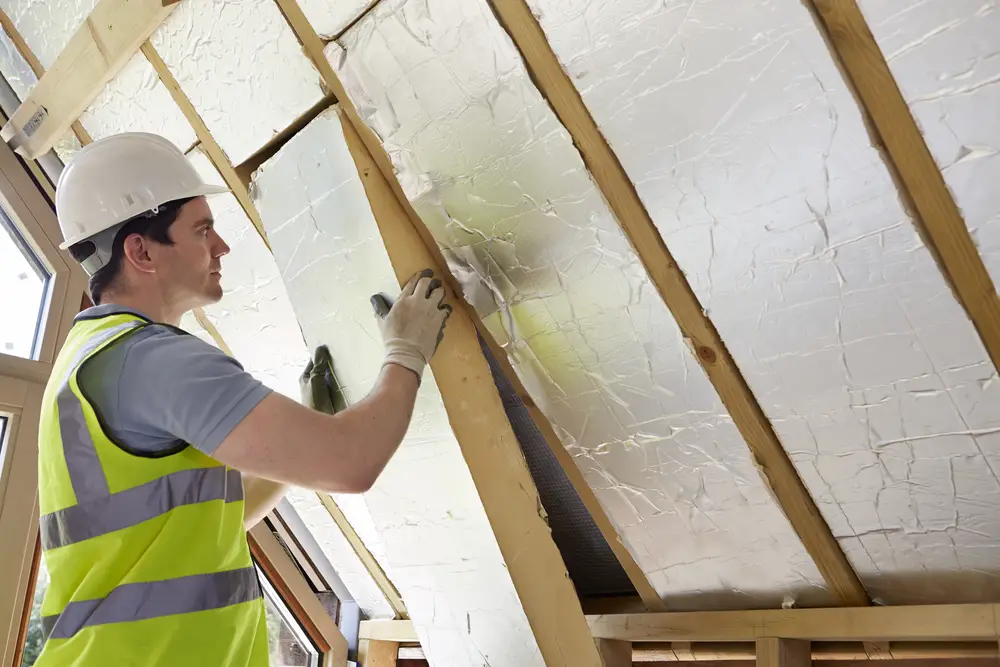
Air source heat pumps are more suited to underfloor heating systems than radiators. This is because, underfloor heating requires low flow temperatures to function, unlike radiators.
Radiators will require a high-temperature heat source for them to function effectively. Although underfloor heating would take time to heat up to considerable temperatures, it is still very efficient.



